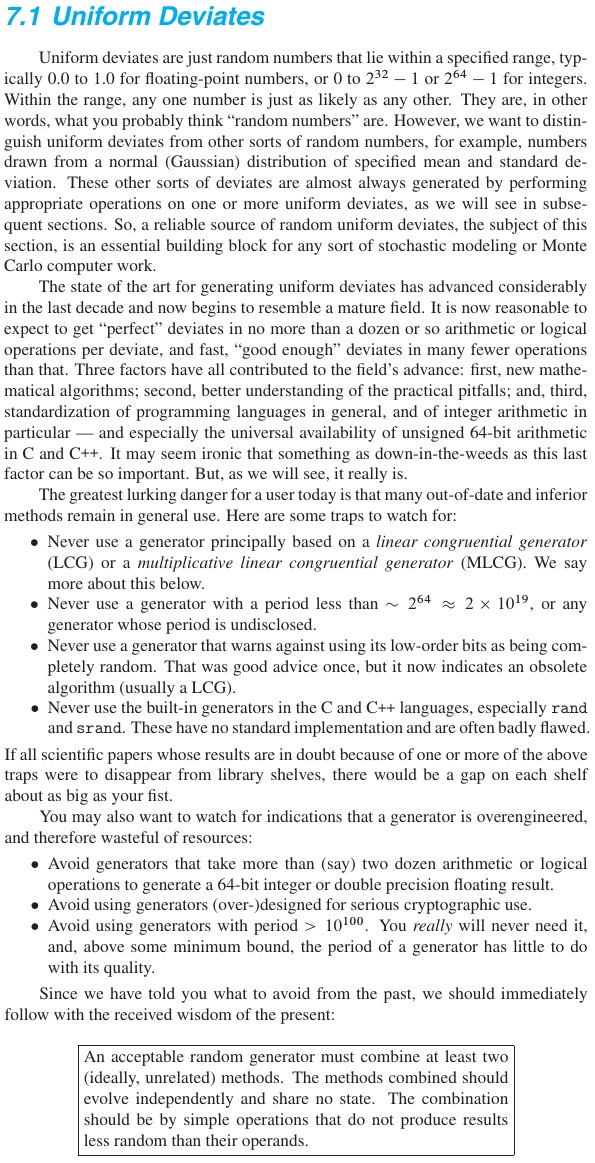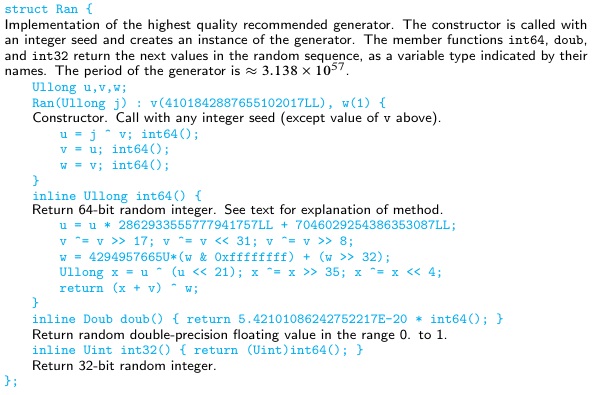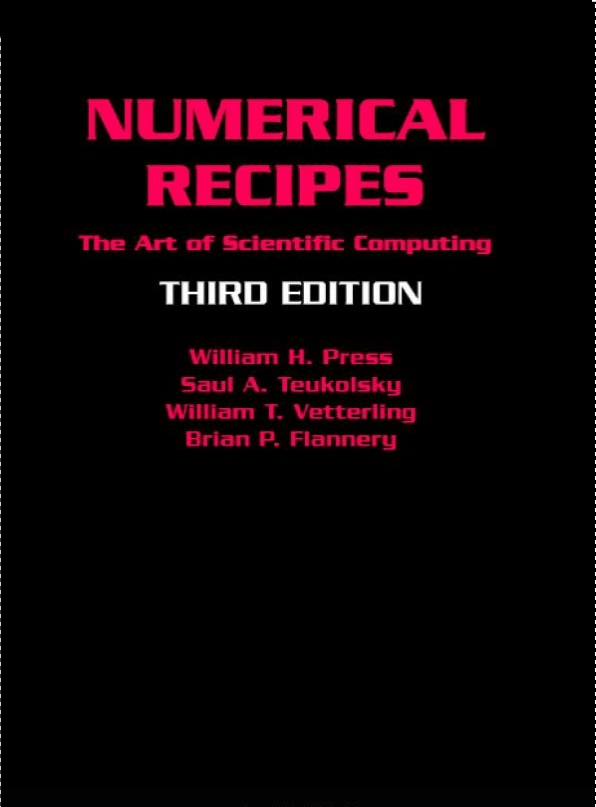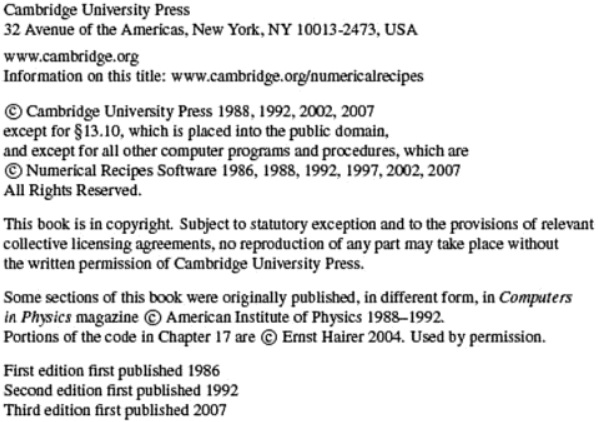随机数(二)
均匀分布
Numerical Recipes, The Art of Scientific Computing, Third Edition , Chapter 7 Random Numbers :

Ran 程序


typedef unsigned int Uint; // 32-bit unsinged integer typedef unsigned long long int Ullong; // 64-bit unsinged integer typedef double Doub; // 64-bit floating point 注意,由于 Ullong 和 Doub 都是 64-bit 的,所以把 Ullong 转换为 Doub 时有可能丧失精度。即,上述程序中的 int64() 的不同的值有可能对应 doub() 的相同的值。
1.0 / (1.0 + ULLONG_MAX) == 1.0 / ULLONG_MAX == 5.42101086242752E-20 0.0 <= doub() <= 1.0 // 注意: doub() 有可能等于 1.0 NrRandom 类
使用上述 Ran 程序中的算法,可以得到以下 C# 程序:
namespace Skyiv { using System; public sealed class NrRandom : Random { ulong v1, v8, v16, v32, u, v = 4101842887655102017, w = 1; int c1 = 0, c8 = 0, c16 = 0, c32 = 0; protected override double Sample() { return 1 / (1.0 + uint.MaxValue) * NextUInt32(); } public override double NextDouble() { return Sample(); } public override int Next() { return Next(int.MaxValue); } public NrRandom() : this((ulong)DateTime.Now.Ticks) { } public NrRandom(ulong seed) { u = v ^ seed; NextUInt64(); v = u; NextUInt64(); w = v; NextUInt64(); } public ulong NextUInt64() { u = u * 2862933555777941757 + 7046029254386353087; v ^= v >> 17; v ^= v << 31; v ^= v >> 8; w = 4294957665U * (w & 0xffffffff) + (w >> 32); ulong x = u ^ (u << 21); x ^= x >> 35; x ^= x << 4; return (x + v) ^ w; } public override int Next(int max) { if (max < 0) throw new ArgumentOutOfRangeException(nameof(max)); return (int)(Sample() * max); } public override int Next(int min, int max) { if (min > max) throw new ArgumentOutOfRangeException(nameof(min)); return (int)(min + (long)(Sample() * (max - (long)min))); } public override void NextBytes(byte [] buffer) { if (buffer == null) throw new ArgumentNullException(nameof(buffer)); for (int i = 0; i < buffer.Length; i++) buffer[i] = NextByte(); } public uint NextUInt32() { if (c32-- != 0) return (uint)(v32 >>= 32); c32 = 1; return (uint)(v32 = NextUInt64()); } public ushort NextUInt16() { if (c16-- != 0) return (ushort)(v16 >>= 16); c16 = 3; return (ushort)(v16 = NextUInt64()); } public byte NextByte() { if (c8-- != 0) return (byte)(v8 >>= 8); c8 = 7; return (byte)(v8 = NextUInt64()); } public bool NextBoolean() { if (c1-- != 0) return ((v1 >>= 1) & 1) != 0; c1 = 63; return ((v1 = NextUInt64()) & 1) != 0; } } } 简要说明:
- NrRandom(ulong seed) 对应 Ran(Ullong j) 。
- ulong NextUInt() 对应 Ullong int64() 。
- 上述两个方法是本算法的核心部分,其他方法都基于这两者。
- double NextDouble() 要求在 [0.0, 1.0) 内,所以和 Doub doub() 有所不同。
我想,在需要高质量的伪随机数生成器的场合,这个 NrRandom 类可以替代 .NET Framework 中的 Random 类。而且,它还有以下的方法:
- ulong NextUInt64()
- uint NextUInt32()
- ushort NextUInt16()
- byte NextByte()
- bool NextBoolean()
参考资料
- MSDN: Random Class (System)
- 豆瓣:Numerical Recipes, The Art of Scientific Computing, 3rd Edition


正文到此结束
热门推荐
相关文章
Loading...











![[HBLOG]公众号](http://www.liuhaihua.cn/img/qrcode_gzh.jpg)

